
It seems as though almost everyone loves semi-auto pistols these days, particularly for self-defense applications. Greater carry capacity and faster, less complicated reloads have made them very appealing to average people defending themselves from bad people with evil in their hearts.
Of course, Hollywood has done their part as well. If you doubt that, when was the last major motion picture you saw where the protagonist carried anything except a semi-auto?
Along those lines, most people who carry a semi-auto handgun have spent precious little time learning and drilling in how to fix stoppages.
“My gun never malfunctions,” many of them will say. Except that it does. Especially if you run with something…lower priced. Even top-shelf brands will malfunction, especially if you’re shooting it from non-conventional firing positions while fighting for your life.
The solution for most stoppages remains the tried and true Tap – Rack – Ready method.
Safety first! Keep your trigger finger off the bang switch as you’re completing your malfunction clearing, and keep your muzzle pointed downrange towards the threat, not towards your soft body parts of those of your friends.
Retain your firing grip on the pistol with your strong side hand. Why? You don’t want to waste precious tenths of a second reacquiring the proper firing grip after clearing the problem. Here’s an example of a beginner (a left-handed shooter, by the way) breaking a good firing grip to work on a malfunction.
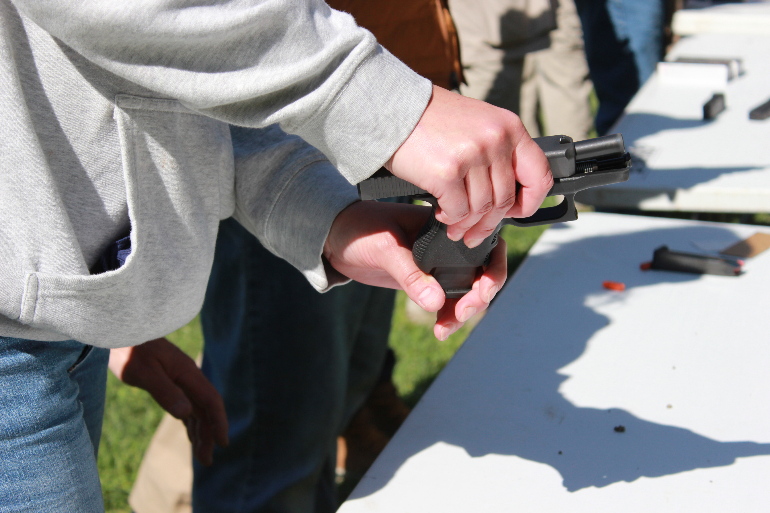
While holding your gat with a good firing grip, tap the magazine firmly to ensure that it’s properly seated in the gun. Don’t be gentle with it. Don’t hold back. Smack it like you mean it.
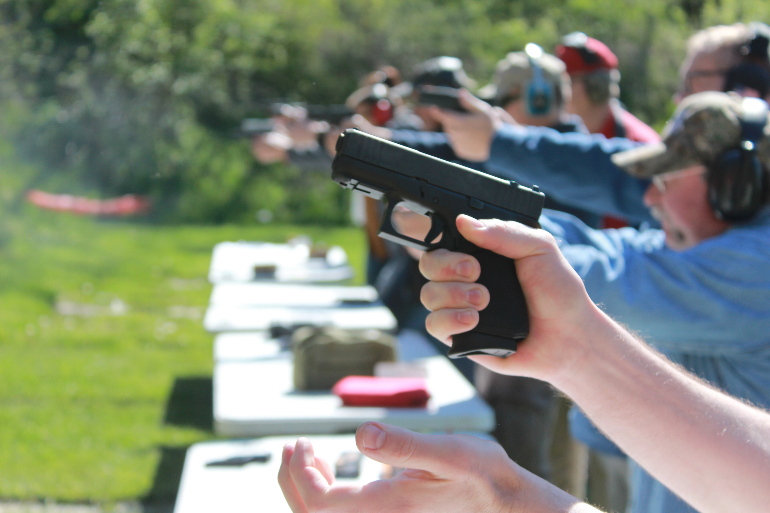
Then reach over the top of the slide and rack it like you’re trying to rip it off the frame of the gun. Don’t baby it and don’t “ride” it forward. It’s not made of glass.
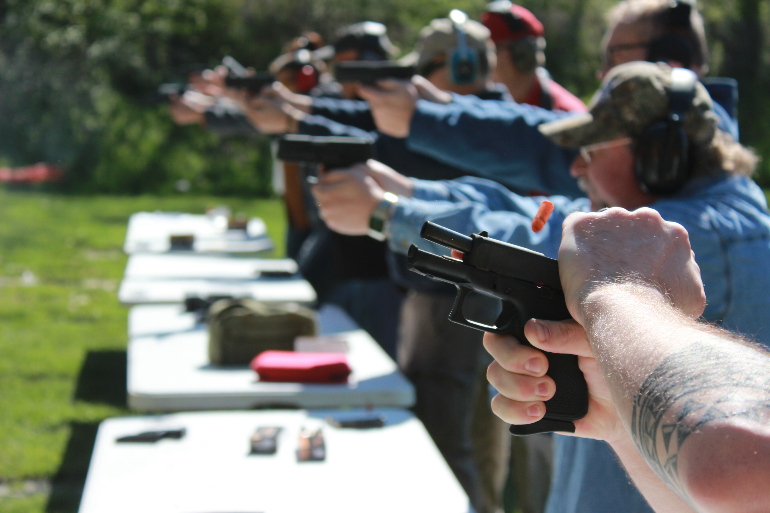
Then you’re ready to re-engage your target and engage the bang switch as needed.
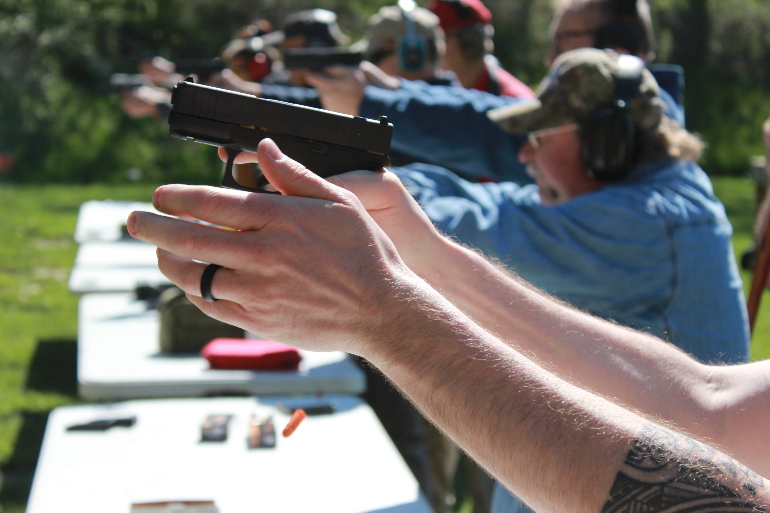
Done well, a proficient shooters should be able to diagnose a stoppage, tap that mag, rack the slide and return to action within two to three seconds. Big time bonus points for doing so from behind cover and/or while moving. Yes, it’s like walking, chewing gum, doing a choreographed task while maintaining awareness for a potential threat – all at once.
For the record, revolvers have fewer malfunctions. Moreover, when revolvers “malfunction” by giving a click when it should go bang, the solution is far simpler: Simply pull the trigger again.
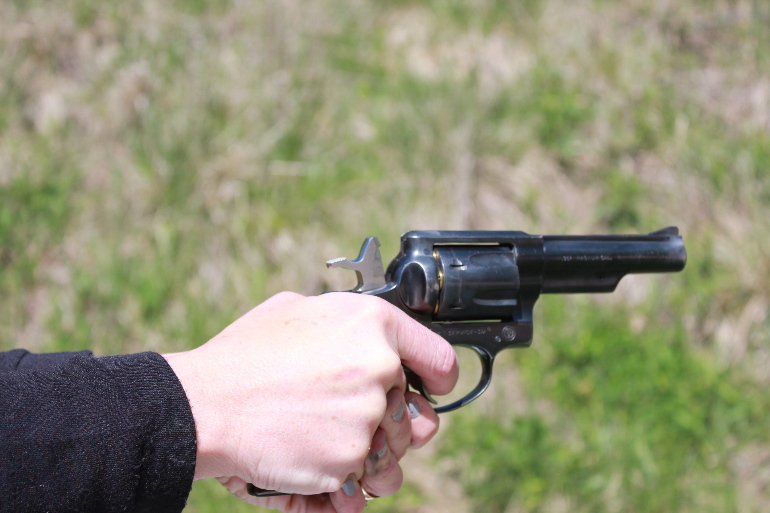
Your local gun shop probably has orange Safe-T-Trainers plastic “dummy cartridges” that can be inserted randomly into magazines to create stoppages. If they don’t put your google skills to use. Order a package of 50 as the plastic rims will break off in places over time if you use these religiously. They will set you back about the cost of a box of traditional ammo but they’ll prove priceless to help train you how to handle a stoppage in a gunfight.
Once in hand, put two or three in a magazine along with 5 to 10 live rounds and have at it. Remember, slow is smooth and smooth will become quicker as you eliminate wasted movement. Not only that, but even after you complete the “tap-rack-ready” drill to clear a stoppage, you must still keep your wits about you to execute good hits on target afterwards.
If you’re really serious about learning unconscious competence for dealing with malfunctions, go to your favorite reloading company and ask them to make you a case of “light” loads for your Roscoe. Then mix those randomly amongst your range ammo. By the time you’ve gone through a thousand truly random tap-rack-readies, you’ll be well-equipped not to freeze when your gun doesn’t perform as expected.
This will solve most of the common stoppages.
For double-feeds, you’ll need to lock the slide back, remove the magazine and stow it somewhere (armpit, pocket, mag pouch or using your teeth) while you cycle the slide two or three times or until the offending case comes out of the chamber.
At that point, reinsert the magazine, drop the slide and engage as appropriate.
Happy malfunction clearing, folks.

2 Responses
Having a friend load a few dummies at random in the range trips for box drills and target transition has always been a fun time (watching me flail like an idiot clearing and minimizing movement to get it done in reviewing the video)
The Mrs. does this for me when I go to the range and I load mags for her when she goes along. We do malfunction drills at once a month.